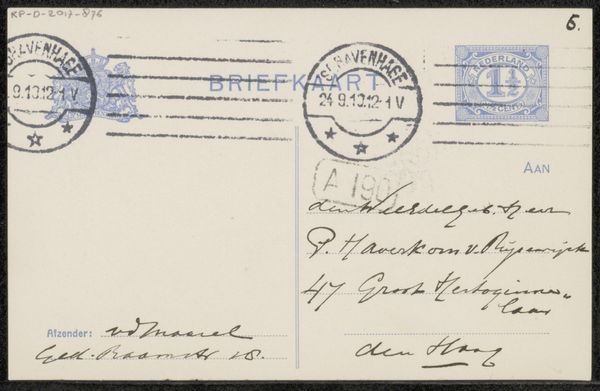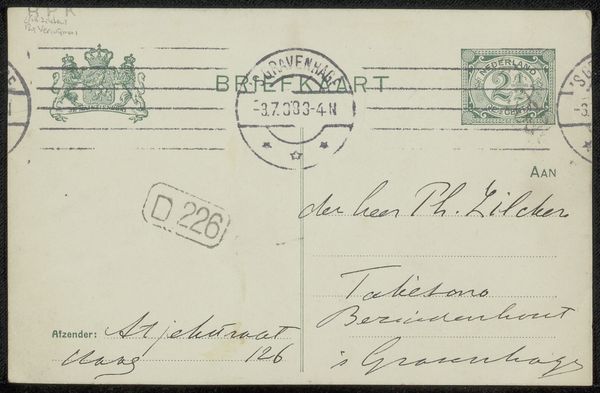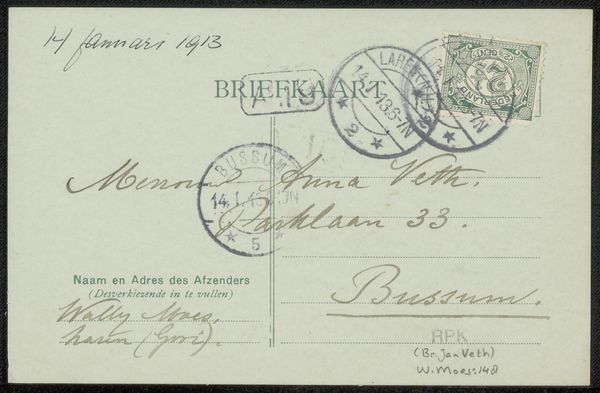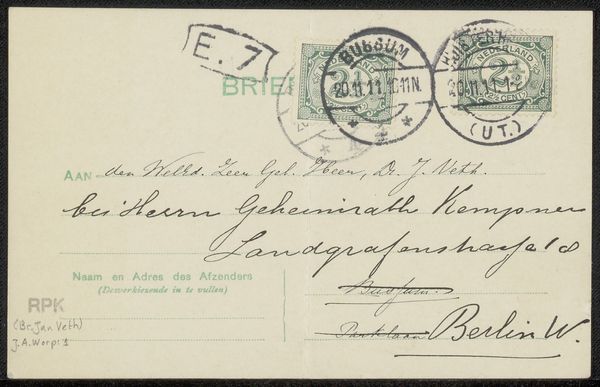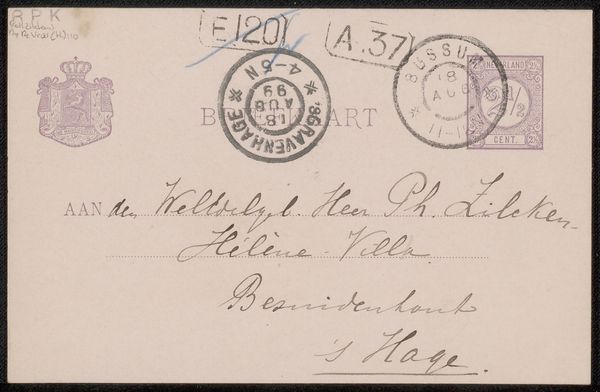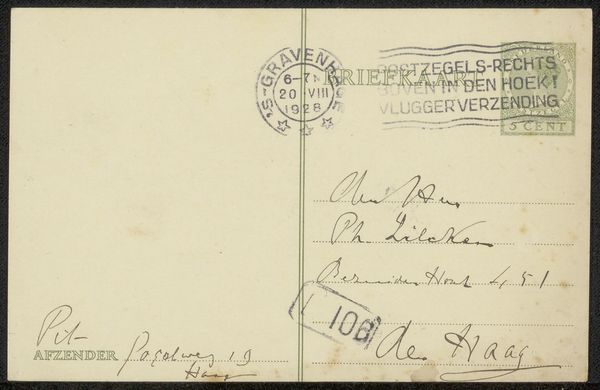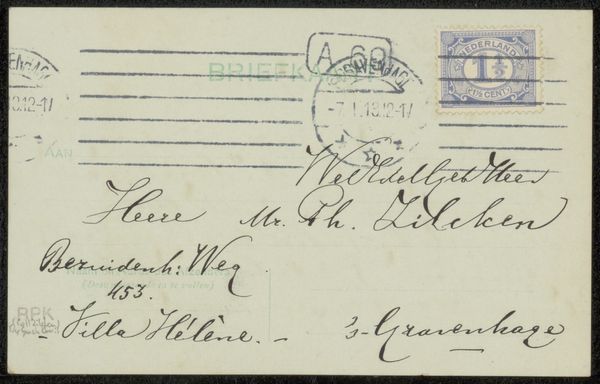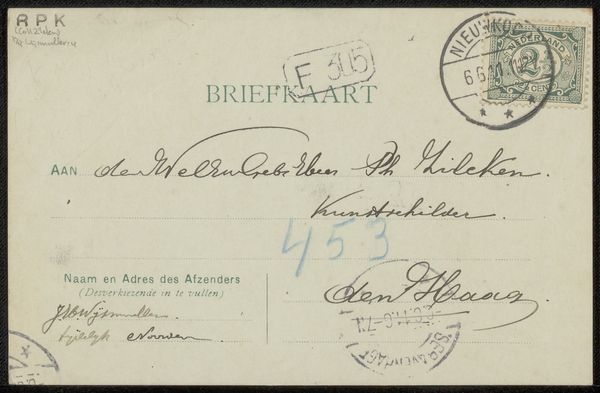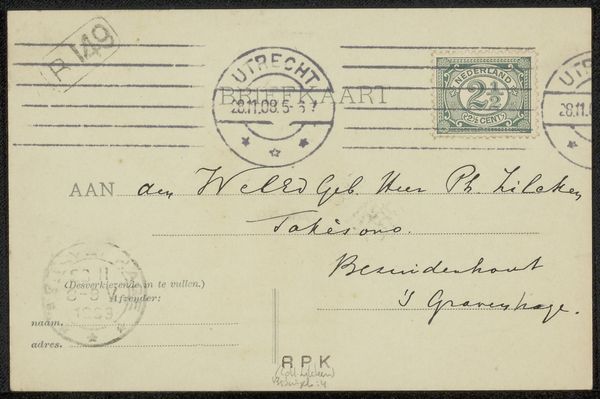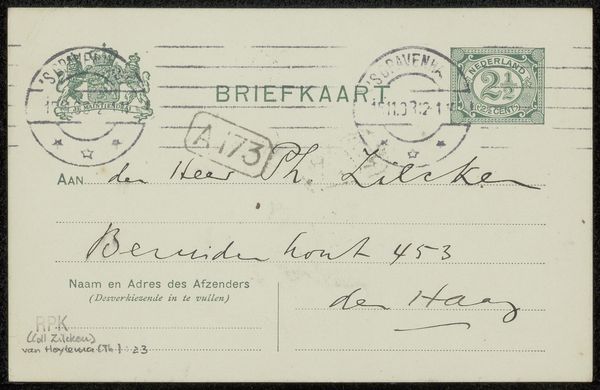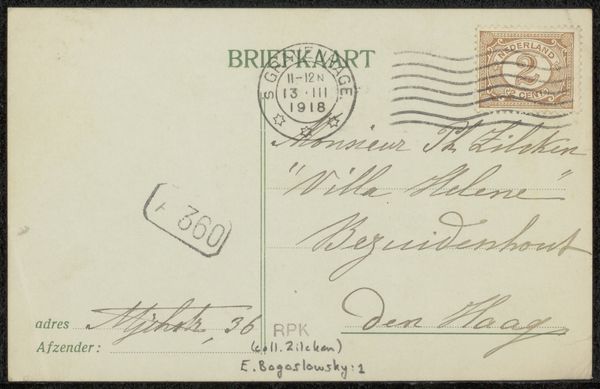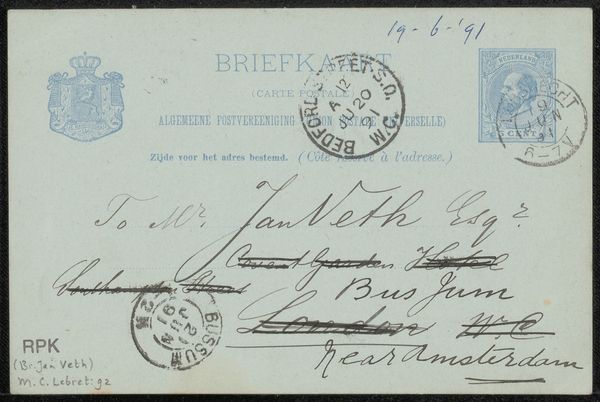
drawing, paper, ink
#
portrait
#
drawing
#
aged paper
#
script typography
#
hand-lettering
#
hand drawn type
#
hand lettering
#
paper
#
personal sketchbook
#
ink
#
hand-drawn typeface
#
fading type
#
handwritten font
#
sketchbook art
#
calligraphy
Copyright: Rijks Museum: Open Domain
Curator: Let's turn our attention to "Briefkaart aan Anna Dorothea Dirks" by Wally Moes, estimated to be from before 1913. It’s crafted with ink on paper. The artistry is particularly striking considering its everyday function. Editor: I find it rather melancholy, actually. The aged paper, the fading ink… it speaks of a time long past and a message perhaps unanswered, or at least, its impact unknown to us now. Curator: Indeed. And observe how Moes employs calligraphy here – a conscious invocation of tradition. Notice, also, the formal structure of a handwritten letter that blends seamlessly with personal expression through handwriting, almost as if the writing becomes image, like the later Pattern and Concrete poetry movements of the mid-20th century. Editor: Right, and that handcrafted element underscores the personal connection – the labour and the material investment in communication before mass production fully took hold. The stamps, the postmarks...these physical markings speak to a whole system of delivery, the physical and human network involved. It gives value and highlights something usually dismissed. Curator: Precisely! Even the choice of script, with its elegant loops and flourishes, reveals a deeper layer of social ritual and decorum associated with letter writing of that period, like other postcards used as tools for education and even love-notes. Editor: The paper itself also must've been fairly common for postcards, which speaks volumes about material conditions of its time. Curator: Well, I appreciate how this little card reveals a world where the hand-written word held tremendous power, almost like a tangible extension of one's presence. It makes me think about the ephemerality of digital communication today. Editor: Absolutely. Considering the labor invested here transforms our understanding of its function – it is not merely a postcard, but a small monument of everyday life and craft from which much of what exists today depends. Curator: A lovely sentiment to close on, acknowledging how visual traces can allow past selves to make their mark. Editor: Yes, that these mundane fragments gain such cultural presence is a true delight.
Comments
No comments
Be the first to comment and join the conversation on the ultimate creative platform.
